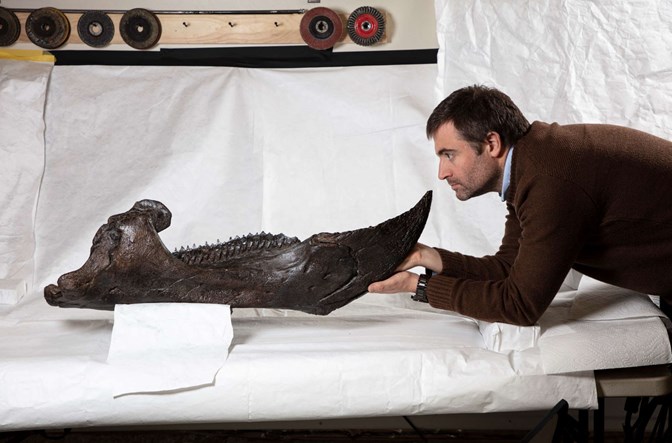Museums Victoria acquires the world’s most complete and most finely preserved Triceratops
The dinosaur fossil will go on display at Melbourne Museum in 2021.
Museums Victoria today confirmed it has acquired a near-complete fossil of a 67-million-year-old adult Triceratops horridus. At 87% complete, the specimen is the most complete and most finely preserved Triceratops ever found, including skin impressions and tendons, and the complete skull and spine.
‘This is among the most globally significant dinosaur discoveries ever made and the most complete dinosaur fossil ever acquired by an Australasian museum. It will make its home here in Victoria at Melbourne Museum from 2021,’ said Lynley Crosswell, CEO and director of Museums Victoria.
Museums Victoria’s senior curator of palaeontology Dr Erich Fitzgerald said the exceptional quality of this Triceratops makes it one of the most informative dinosaur fossils in the history of palaeontology.
‘This is the Rosetta Stone for understanding Triceratops. Despite its popularity, there are still many unanswered questions about the anatomy and palaeobiology of Triceratops. This fossil comprises hundreds of bones including a complete skull and the entire vertebral column which will help us unlock mysteries about how this species lived 67 million years ago. This will be one of a handful of Triceratops skeletons on display around the world in which all bones, from the skull to the tip of the tail, are from one individual animal.’
With its enormous 148 cm wide frill and fearsome three horns, this Triceratops specimen is instantly recognisable. At an estimated 6–7 metres long and more than 2 metres tall, the fossil skeleton is larger than a full-grown African elephant and weighs more than 1000 kg. The skull alone weighs 261 kg and is 99% complete, making it among the most intact Triceratops skulls ever discovered.
Discovered in 2014 on a private property in Montana, USA, the scientific value of this specimen is extraordinary. Early this year, a team of experts from Museums Victoria travelled to Canada where extensive preparation is currently underway to excavate the Triceratops from the rock it is encased in and transport it to Melbourne Museum.
Lynley Crosswell said that scientists from all over the world will be able to visit Melbourne Museum to study this specimen and make new discoveries about the species’ evolution, biology, development, and behaviour.
‘This is a globally significant addition to the State Collection that’s exciting not just for Victoria but for all of Australia. We know our Triceratops will delight and amaze audiences, and it will inspire us to consider the remarkable wonder and fragility of life on Earth.’
‘We are deeply grateful to the Victorian State Government for supporting the Triceratops’ acquisition. This investment in the State Collection will provide an unmatched and unforgettable experience for our visitors and enhance and strengthen the scientific and cultural value of our collections.’
Minister for Creative Industries Danny Pearson said, ‘Museums Victoria offers incredible experiences for visitors and world-class research behind the scenes – it’s fitting that Melbourne Museum will now host one of the most important dinosaur discoveries in history.’
‘This Triceratops fossil will be a must-see attraction for all ages and a major new attraction for Victoria.’
Home to Australia’s leading museum-based palaeontology research program, it is natural that one of the world’s biggest-name dinosaurs should reside in Melbourne as part of Museums Victoria’s State Collection.
67 million years in the making, this specimen will enhance and strengthen the scientific and cultural value of the state collections and enable Museums Victoria to provide exceptional experiences for visitors. From 2021 Victoria will be home to one of the world’s best Triceratops specimens, accessible to all, inspiring life-long wonder and discovery.
Watch Dr Erich Fitzgerald explain the unearthing of the Triceratops:
For interviews and media enquiries please contact:








